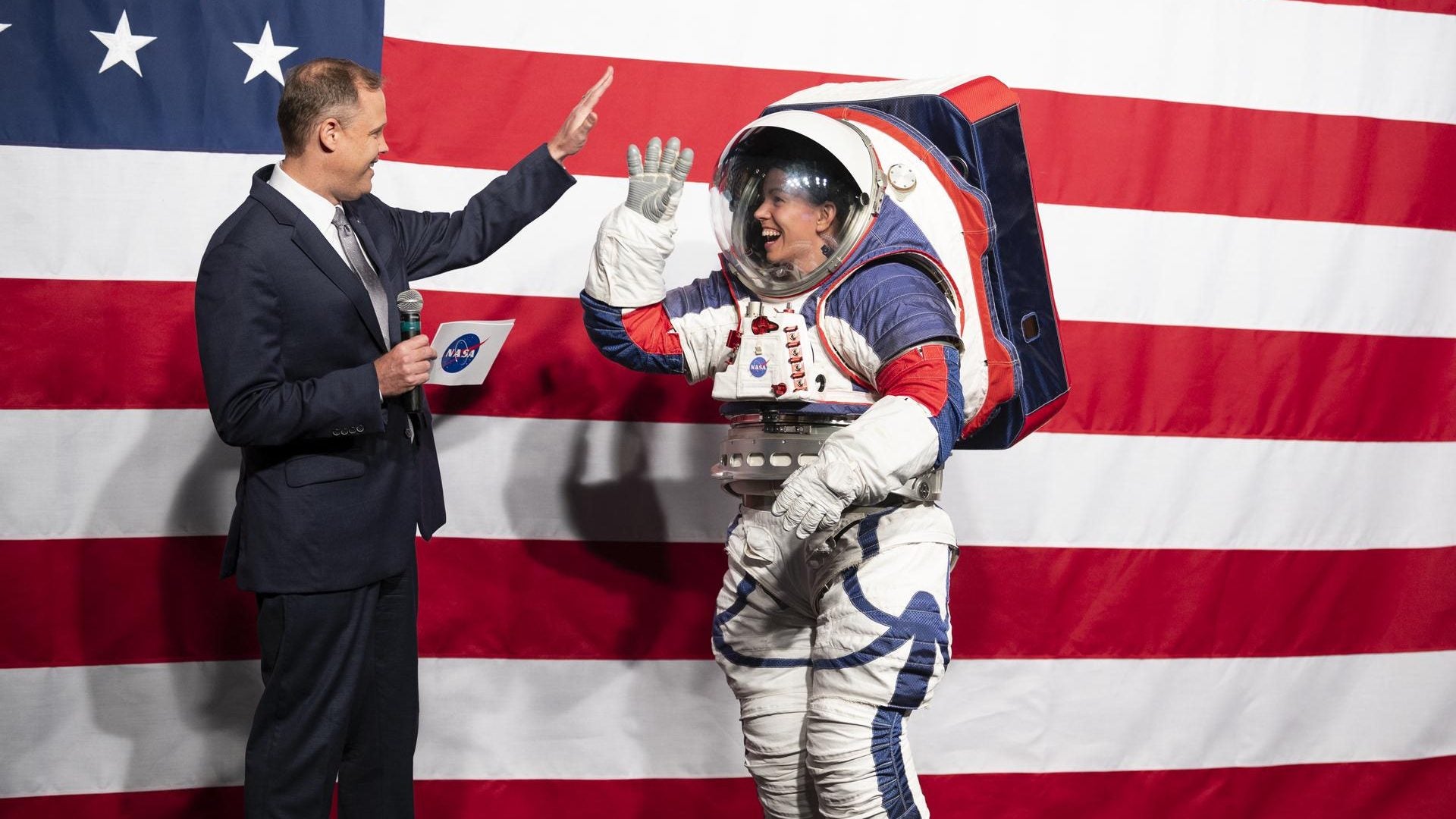A $1 billion space suit is holding up NASA’s 2024 moon landing
In the end, they’ll blame the space suits.


In the end, they’ll blame the space suits.
The US government’s plan to return astronauts to the moon by 2024 was farfetched when it was announced in 2019, and became less likely each year as lawmakers have declined to pay for the project in full.
Still, NASA publicly maintains the 2024 target date, despite delays for the rocket that will take astronauts back to the moon, the vehicles that will carry them down to its surface, and now, the space suits they’ll wear to protect them in the moon’s airless environment, where the temperature ranges from 260°F to -280°F.
This isn’t easy: NASA considers these spacesuits to be, effectively, one-person space vehicles, requiring sophisticated life support systems and reliable communications, as well as the means to keep astronauts comfortable, fed, hydrated, and capable of rambling about and using various tools.
The NASA Inspector General said this week that despite $420 million spent since 2008, NASA will not have two suits ready for the mooted 2024 landing. The agency was attempting to design, test, and build the suit in-house, working with 27 different subcontractors.
The total price tag will be over $1 billion, more than what it cost to build the Falcon 9 orbital rocket and cargo Dragon spacecraft, as former SpaceX engine guru Tom Mueller observed. (Actually, per NASA, it cost $850 million, $396 million of which came from SpaceX.) Naturally, Elon Musk offered to step in and build a suit for the space agency. It could come to that—NASA is contemplating asking private companies to develop new space suits.
Still, Musk has enough on his plate hustling to get his next big rocket, Starship, off the ground. NASA has tapped it to take astronauts down to the surface of the moon, but in doing so, it snubbed Blue Origin and Dynetics, two other bidders, who issued a formal protest. The Government Accountability Organization (GAO) released its full decision this week, rejecting their protest.
Blue Origin, the space company founded by Jeff Bezos, says it is not deterred by the rejection and is considering taking the space agency to court. In particular it argues that the procedure NASA approved to review SpaceX’s vehicles before launch “would be reckless in the pursuit of safely returning humans to the Moon.”
“We continue to urge NASA to restore competition and immediately award a second provider,” the spokesperson said. “Two providers ensure greater safety and mission success, promote competition, and control costs.”
The problem with that approach—which is also NASA’s preference—is that it requires several billion additional dollars that NASA does not have and do not seem to be forthcoming from lawmakers. Bill Nelson, the new NASA administrator, hoped to win $10 billion in a bipartisan infrastructure bill, but the version that passed the Senate this week did not include it.
When asked if the 2024 deadline is feasible, Nelson tends to say it depends on how much funding Congress provides. Lawmakers reply, show us the plan. At a June budget hearing, Nelson told lawmakers the space agency would have a plan to return to the moon ready once the GAO made its decision.
Whenever that plan is revealed, it will gain significant credibility simply by acknowledging that putting humans on the moon in 2024 isn’t possible.
A version of this story originally appeared in Quartz’s Space Business newsletter.